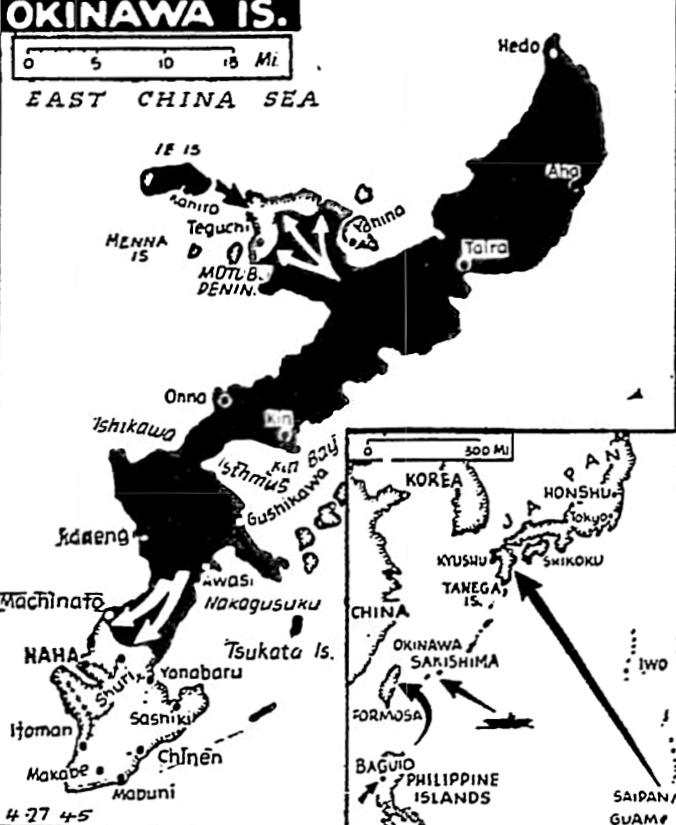Supreme HQ Allied Expeditionary Force (April 27, 1945)
FROM
(A) SHAEF MAIN
ORIGINATOR
PRD, Communique Section
DATE-TIME OF ORIGIN
271100B April
TO FOR ACTION
(1) AGWAR
(2) NAVY DEPARTMENT
TO (W) FOR INFORMATION (INFO)
(3) TAC HQ 12 ARMY GP
(4) MAIN 12 ARMY GP
(5) AIR STAFF MAIN
(6) ANCXF
(7) EXFOR MAIN
(8) EXFOR REAR
(9) DEFENSOR, OTTAWA
(10) CANADIAN C/S, OTTAWA
(11) WAR OFFICE
(12) ADMIRALTY
(13) AIR MINISTRY
(14) UNITED KINGDOM BASE
(15) SACSEA
(16) CMHQ (Pass to RCAF & RCN)
(17) COM ZONE
(18) SHAEF REAR
(19) SHAEF MAIN
(20) HQ SIXTH ARMY GP
(21) WCIA OR OWI WASHINGTON FOR RELEASE TO COMBINED U.S. AND CANADIAN PRESS AND RADIO AT 0900 HOURS GMT
(REF NO.)
NONE
(CLASSIFICATION)
IN THE CLEAR
Communiqué No. 384
UNCLASSIFIED: Allied forces west of Delmenhorst advanced three miles to reach Rethorn. We occupied the greater part of Bremen where enemy opposition weakened.
Enemy gun positions and strongpoints east of Leer and north of Bremen; shipping off the Frisian Islands and in the Ems Estuary; road and rail transport and other communications targets in the area of Flensburg and Rendsburg and west of Oldenburg, and objectives south of Oldenburg, were attacked by other fighter-bombers and rocket-firing fighters.
Medium bombers attacked railyards at Buchen east of Hamburg.
Our units have liberated Eger (Cheb), in Czechoslovakia and reached a point 27 miles to the south. West of the Czech-German border, 16 miles farther south we reached the vicinity of Stadlern.
To the southeast, in Germany, our armor has entered Roehrnbach and reached the vicinity of Tittling, 11 miles northwest of the Austrian border.
In the area north and east of Straubing, we entered Neukirchen and reached the vicinity of Gschwendt.
Our units crossed the Danube River in several places between Frengkofen and Regensburg and entered Irl.
Other troops crossed the Danube in the vicinity of Kapfelberg and reached a point three miles south of Regensburg. Our cavalry elements have cleared that part of Kelheim on the north bank of the Danube.
Farther west, we captured Dietfurt and entered Eichstatt and Ingolstadt.
In the area north of Augsburg, our units moved to the Danube and are mopping up the north bank for a stretch of 11 miles. To the southwest, we advanced ten miles beyond the river on a front paralleling it for 20 miles. Muensterhausen, 15 miles south of the Danube, was reached.
Two counterattacks, one in battalion strength supported by armor, were beaten off at an autobahn bridge over the Danube near Guenzburg. Neu Ulm, across the river from Ulm, was entirely cleared.
Along the Iller Canal running south from Ulm our units fanned out to the east, west and south. We reached a point 15 miles south of Ulm.
The pocket south of Stuttgart was considerably reduced.
Our forces reached a point on the north shore of Lake Constance within 13 miles of Friedrichshafen, and are along the Swiss border from Basel to the Lake.
Deep penetrations were made into the Black Forest Pocket. A 12-mile thrust to the east almost cut it in two.
From north of Augsburg to south of Ulm, 11,335 prisoners were taken. Between Ulm and the Rhine, 6,000 were captured.
Allied forces in the west captured 34,237 prisoners 25 April.
Road and rail communications in an area east of Nuremberg to south of Munich and in a triangular area formed by Munich-Prague-Linz, and a motor convoy north of Berchtesgaden, were attacked by fighter-bombers.
Airfields east of Munich, southeast of Straubing and near Plattling were attacked by light and fighter-bombers. Many aircraft were destroyed or damaged on the ground.
COORDINATED WITH: G-2, G-3 to C/S
THIS MESSAGE MAY BE SENT IN CLEAR BY ANY MEANS
/s/
Precedence
“OP” - AGWAR
“P” - Others
ORIGINATING DIVISION
PRD, Communique Section
NAME AND RANK TYPED. TEL. NO.
D. R. JORDAN, Lt Col FA4655
AUTHENTICATING SIGNATURE
/s/
